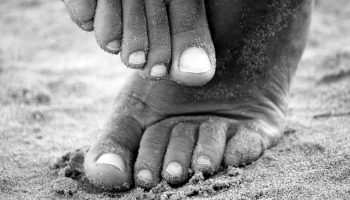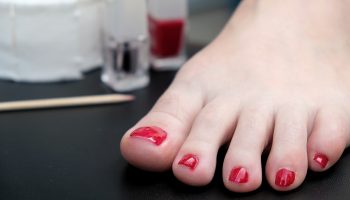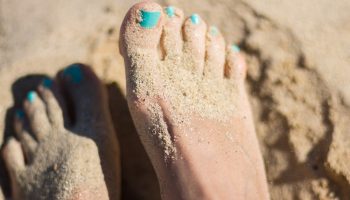We offer a wide variety of foot care services all under one roof.
Accepting New Patients
- We accept cash, debit, and credit cards
- Quality Care without breaking the bank
- Wide selection of treatments
Check Out Our Top Services:

Bunions
Get back into your favorite pair of shoes! Dr. Yu and his team at Westside Podiatry can help get rid of bunions.

Foot Pain
Feet stay in optimal health under the care of Dr. Yu and his team at Westside Podiatry.

Foot Surgery
Visit Dr. Yu at Westside Podiatry to find out if you qualify for Comprehensive Foot Surgery.

Heel Pain
Eliminate Heel Pain under the care of Dr. Yu and his team at Westside Podiatry.

Ingrown Nails
Ingrown Nails can be painful. Visit Dr. Yu and his team at Westside Podiatry for your toenail-related problems.

Orthotics
Protect your feet and get fitted for your custom orthotics with Dr. Yu at Westside Podiatry.

Other Services
At Westside Podiatry, we have a wide variety of services available. Here you can see all other services that we offer!

Specialized Services
At Westside Podiatry, we offer a variety of specialized services for your consideration.

At-Risk Feet
Protect your busy feet with gentle podiatric treatments with Dr. Yu at Westside Podiatry.
Other Services
Diabetic Foot Care
Diabetes affects the way the human body processes glucose. Over an extended period of time, high glucose levels can damage the nervous and arterial system, reducing sensation in the feet and making you prone to delayed healing.
Due to the suppression of the immune response and reduced blood flow to the feet in diabetics, the human body may find it difficult to heal wounds and injuries one suffers to your feet. As sensation has already been reduced, if you aren’t checking your feet regularly, you may not realize your feet are injured until it’s too late. If left untreated, bacterial infections can lead to gangrene, which may require amputation to ensure that the infection does not spread to other parts of the body.
There are some simple precautions you can take to keep your feet healthy as a diabetic.
If you suffer from diabetes, it is crucial that you ensure foot health by working with your podiatrist to reduce the likelihood of infection and quickly treat any infection that arises. Contact us today to learn how we can help you protect your feet and keep them happy and healthy.
Bursitis
Bursitis is an inflammation of a small fluid-filled sac, called a bursa, located near a joint, bone or tendon. The bursa, which protects the area from friction, can become inflamed from repetitive motion or irritation from shoes. In the foot, the heel and the toes are most often affected.
Symptoms of bursitis include localized redness, swelling, and pain. Treatment may include resting the affected area, local ice therapy, nonsteroidal anti-inflammatory drugs (NSAIDs), such as ibuprofen, padding or corticosteroid injections to help reduce inflammation and relieve pain. If these nonsurgical treatments fail to provide adequate pain relief, surgery may be needed.
Calluses & Corns
A callus is a thickened area of skin on the foot caused by pressure and repeated rubbing, such as from a shoe or sock. The rubbing causes the skin to produce a layer of protective skin (a callus). Calluses vary in size and can become painful.
A corn is a small circular thickened lesion on the skin of the foot. It usually forms due to repeated pressure on the skin, such as the rubbing of a shoe. The name “corn” comes from its resemblance to a kernel of corn. A corn is different from a callus in that it has a central core of hard material.
People with foot deformities, such as hammertoes, often suffer from corns because the tops of the bent toes rub against the tops of shoes.
Flat Feet
Flatfoot is often a complex disorder, with diverse symptoms and varying degrees of deformity and disability. There are several types of flatfoot, all of which have one characteristic in common: partial or total collapse (loss) of the arch. Other characteristics shared by most types of flatfoot include toe drift, in which the toes and front part of the foot point outward. The heel tilts toward the outside and the ankle appears to turn in. A tight Achilles tendon, which causes the heel to lift off the ground earlier when walking and may make the problem worse, bunions and hammertoes may develop as a result of a flatfoot.
Hammertoes
Hammertoe is a contracture (bending) deformity of one or both joints of the second, third, fourth or fifth (little) toes. This abnormal bending can put pressure on the toe when wearing shoes, causing problems to develop.
Normal toes unaffected by hammertoe. Hammertoes usually start out as mild deformities and get progressively worse over time. In the earlier stages, hammertoes are flexible and the symptoms can often be managed with noninvasive measures. But if left untreated, hammertoes can become more rigid and will not respond to nonsurgical treatment.
Because of the progressive nature of hammertoes, they should receive early attention. Hammertoes never get better without some kind of intervention.
Metatarsal Disorder
Metatarsalgia is one of the more commonly seen complaints in any podiatry practice. Common treatments for the disorder include ice, removable metatarsal pads, anti-inflammatories, injected steroids and physical therapy.
Skin Lesions & Other Problems
Feet can suffer some of our worst skin complaints and if untreated can often go on for years hidden away by our shoes. Cracked heels, callus, tinea, and corns are some of the most common, embarrassing and sometimes painful skin complaints we see. Trauma, infection, skin disease, and even walking can cause changes in the skin of our feet.The good news is that these and many other skin conditions can often be treated with a little work from your podiatrist as well as the right products and advice.
Tendonitis
Foot and ankle tendonitis is a common cause of foot pain. It occurs when there is inflammation or irritation of the tendons, which is usually due to overuse from repetitive movements or stretching or an injury such as an ankle sprain.
Foot and ankle tendonitis can affect any of the tendons in the foot. The most common result in conditions such as Achilles Tendonitis at the back of the foot and Extensor Tendonitis on the top of the foot.
Symptoms typically consist of pain, swelling and stiffness. It usually takes two to three months to recover, but it can take much longer without the proper treatment so early diagnosis and treatment is essential.
Trauma
Strains, stretches or tears in the muscles or tendons are typically the result of a quick twist or pull. Sprains are also stretches or tears, but these affect the ligaments and are generally caused by a fall or trauma to the ankle or foot.
Bone fractures, or breaks, often occur during slips and falls, though they also can be the result of a direct impact to the foot or ankle, such as from an automobile accident.
Advancing age and repetitive stress to the foot and ankle can make a person more susceptible to these injuries. Improper footwear and inadequate sports training are also factors in many instances of ankle and foot trauma.
Warts
A wart is a growth in the skin caused by a viral infection. Warts tend to be hard and flat with elevated, rough surfaces with well-defined boundaries. Some have one or more black pinpoints. They are frequently called plantar warts because they appear on the plantar surface, or sole of the foot. Children, especially teenagers, tend to be more susceptible to warts than adults.
It is possible that a variety of other more serious lesions, including carcinomas and melanomas (cancers), can be mistakenly identified as warts. Because of those identification problems, it is wise to consult a podiatrist about any suspicious growth or eruption on the skin of the feet. If warts are left untreated, they can grow and spread into clusters of several warts.
Wound Care
Ulcers, which are open sores in the skin, occur when the outer layers of the skin are injured and the deeper tissues become exposed. They can be caused by excess pressure due to ill-fitting shoes, long periods in bed or after an injury that breaks the skin. Ulcers are commonly seen in patients living with diabetes, neuropathy or vascular disease. Open wounds can put patients at increased risk of developing infection in the skin and bone.

About Dr. Ian Yu
When tending to our podiatric ailments, we all want the best. The best care. The best service. The best results. It’s as simple as that.
Ian Yu is a unique kind of Vancouver podiatrist. He uses his extensive knowledge of podiatry, medical education, and orthopedic surgery to provide exceptional care. Dr. Yu completed additional training in flat-foot reconstruction, peripheral nerve surgery, and laser therapy for onychomycosis.
